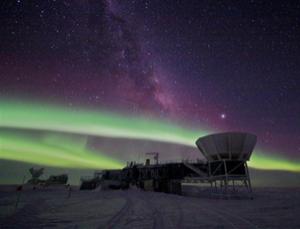
Japanese scientists have journeyed to Antarctica to recover evidence of alterations to Earth's atmosphere, caused in medieval times by supernovae recorded by ancient scholars - including obscure Irish monasteries where monks later interpreted them signs of the Antichrist. No, this isn't the plot of the next Dan Brown novel (or a Dan Brown fan-fiction written by an X-Files addict): this is real science.
Supernovae release terrific amounts of energy, as in "If one happened too close the planet would be sterilized" truly terror-inducing terrific. Some of this energy is fired off as gamma rays, which can travel thousands of light-years and still pack enough of a punch after to alter the atmosphere - which is exactly what happened in 1006 and again in 1054, when gamma rays blasted the upper atmosphere and created spikes in NO3 levels. There was also quite a lot of visible light, creating a star visible even during the day which was noted by various Chinese, Egyptian and even monastic records.
To access past records of the atmosphere, a team of Japanese scientists carefully extracted 122 meters of ice core from Antarctica. Even better, to locate events on such a stretch of frozen time you use known volcanic atmosphere-altering events as reference points - in other words, these guys use exploding mountains as a ruler.
The team found NO3 spikes at times corresponding to 1006 and 1054, as well as a mysterious unknown third event - and we remind you that this is not a movie, even though that sounds so much like a second act reveal leading to a lost city or something, we can practically see Nicolas Cage's shocked expression.
Unlike any movie adventurer of the unknown, who has a tendency to steal/detonate every single relic they find, the Japanese team have also made things easier for anyone who follows them. The unprecedented detail of their observations reveals a standard 11-year cycle in ice-core records, corresponding to the sunspot cycle. This will help future ice-core observers track the time of events.
These people look at timescales so huge that the pulsing of the sun itself is just the ticking of a clock.



Reader Comments
to our Newsletter